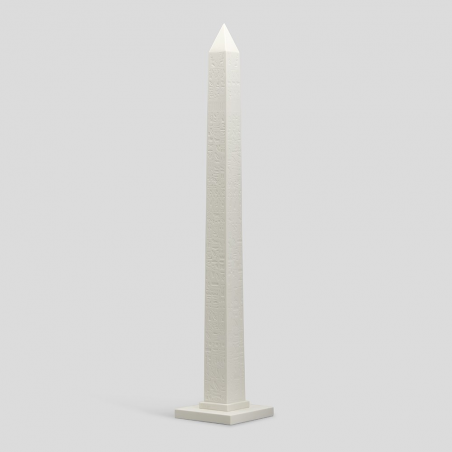















Sculpture in Sèvres porcelain biscuit
Symbolising the conquering spirit of Napoleon I, the Sèvres porcelain obelisk biscuit is one of the masterpieces of the huge tableware set commissioned by the Emperor from the Manufacture. Sèvres marks on the base.
The biscuit is made entirely by hand by our craftsmen in the workshops of the Manufacture. Nuances and variations may appear from one piece to another, making each one almost unique.
The art of porcelain was strongly influenced by the discoveries in Egypt during the Napoleonic wars in the early 19th century.
The obelisk, a manly symbol of fertility, became very popular in the aesthetic trends of the time. Imbued with this past culture, this obelisk is part of the especially Egyptian one, which is one of the most emblematic creations of the Sèvres Manufacture.
How did the Egyptian service was created?
In 1808, on the return from Napoleon Bonaparte's campaign in Egypt, the Manufacture de Sèvres produced an Egyptian service with completely new shapes and decorations, comprising 72 plates and various biscuit shapes.
The decorations of this service were created after the work of Dominique-Vivant Denon Voyage dans la Basse et dans la Haute Égypte pendant les campagnes du général Bonaparte, illustrated with engravings and sketches he made during the Egyptian campaign. The forms and decoration, completely original and elegant, made this service one of the most glorious productions of the Manufacture, transposing with great accuracy the Egyptian motifs in the art of porcelain.
The first set was presented to Tsar Alexander I of Russia and is now in the Hermitage Museum in St. Petersburg and in the Kuskovo Museum near Moscow. A second copy was completed in 1812 for the Empress Josephine, and finally offered in 1818 by Louis XVIII to the Duke of Wellington and kept at Apsley House in London.
You might also like